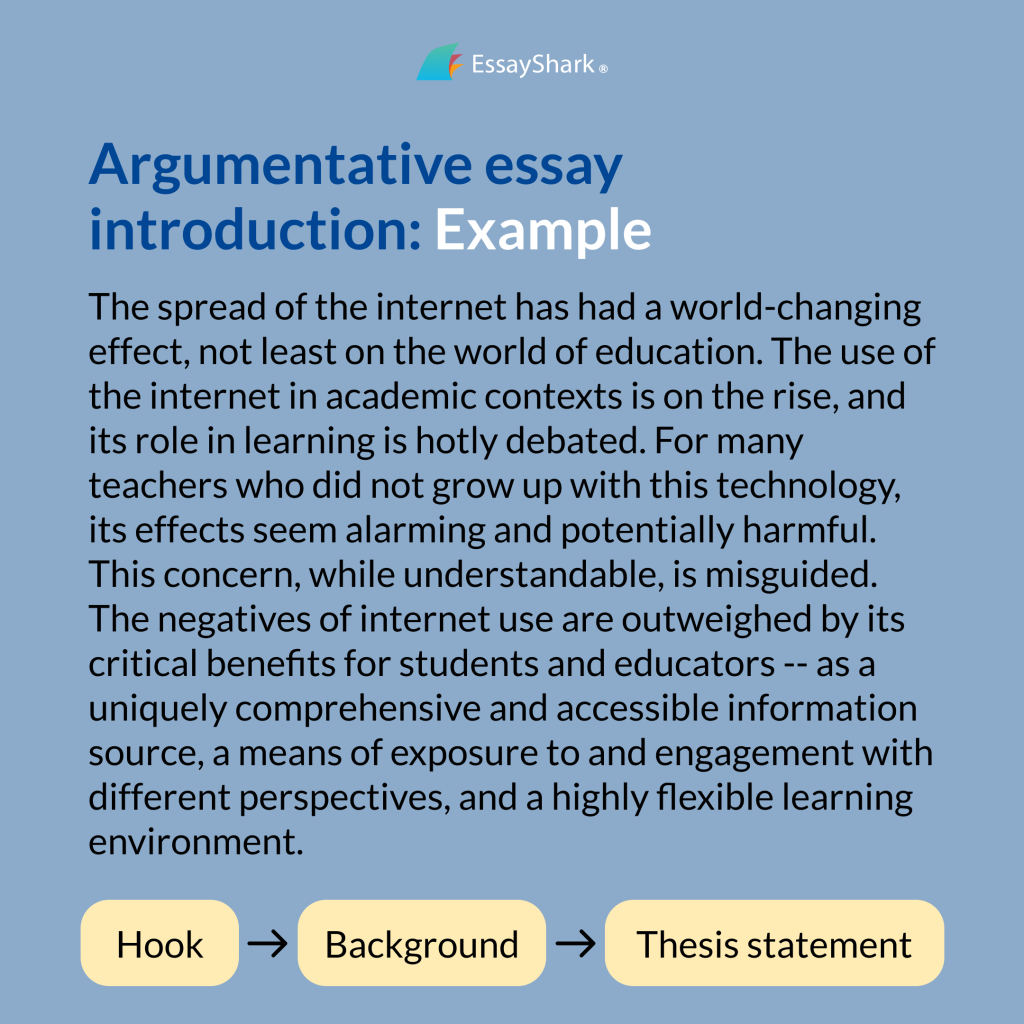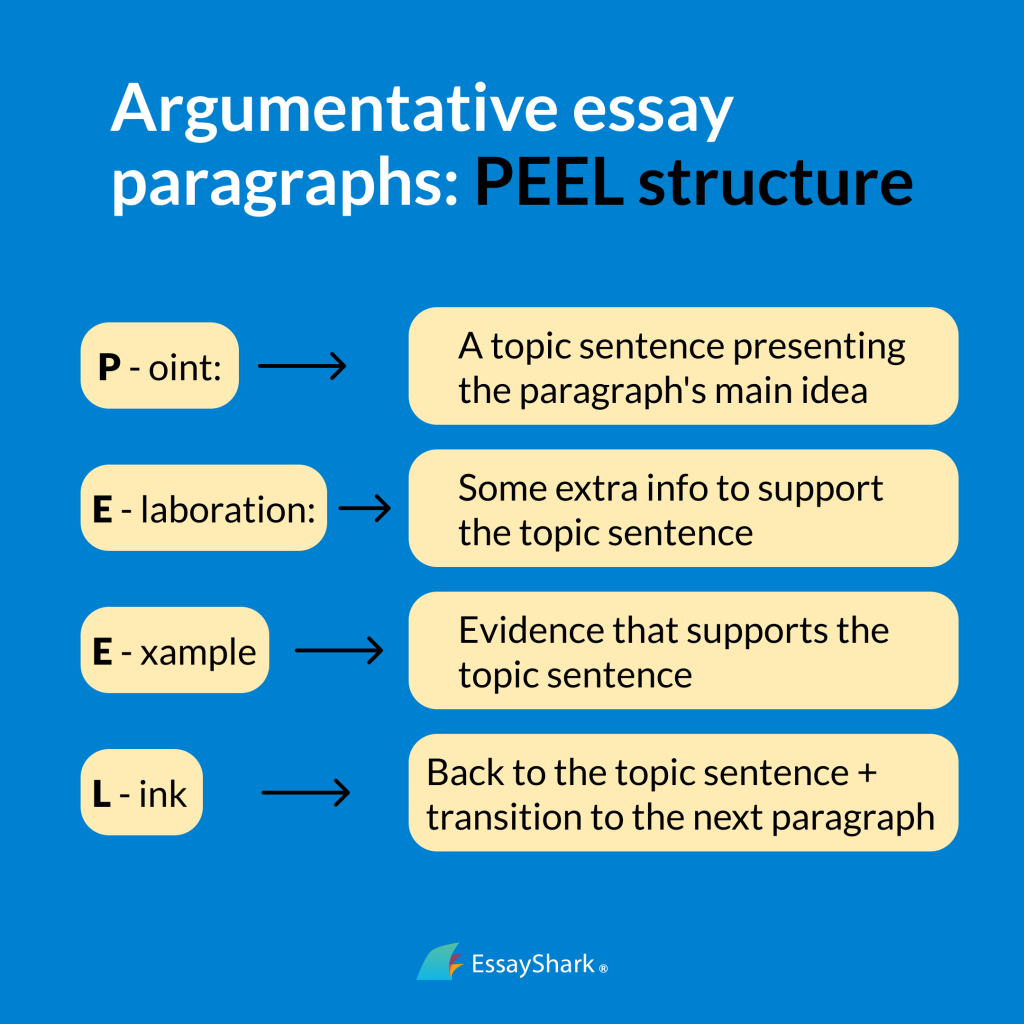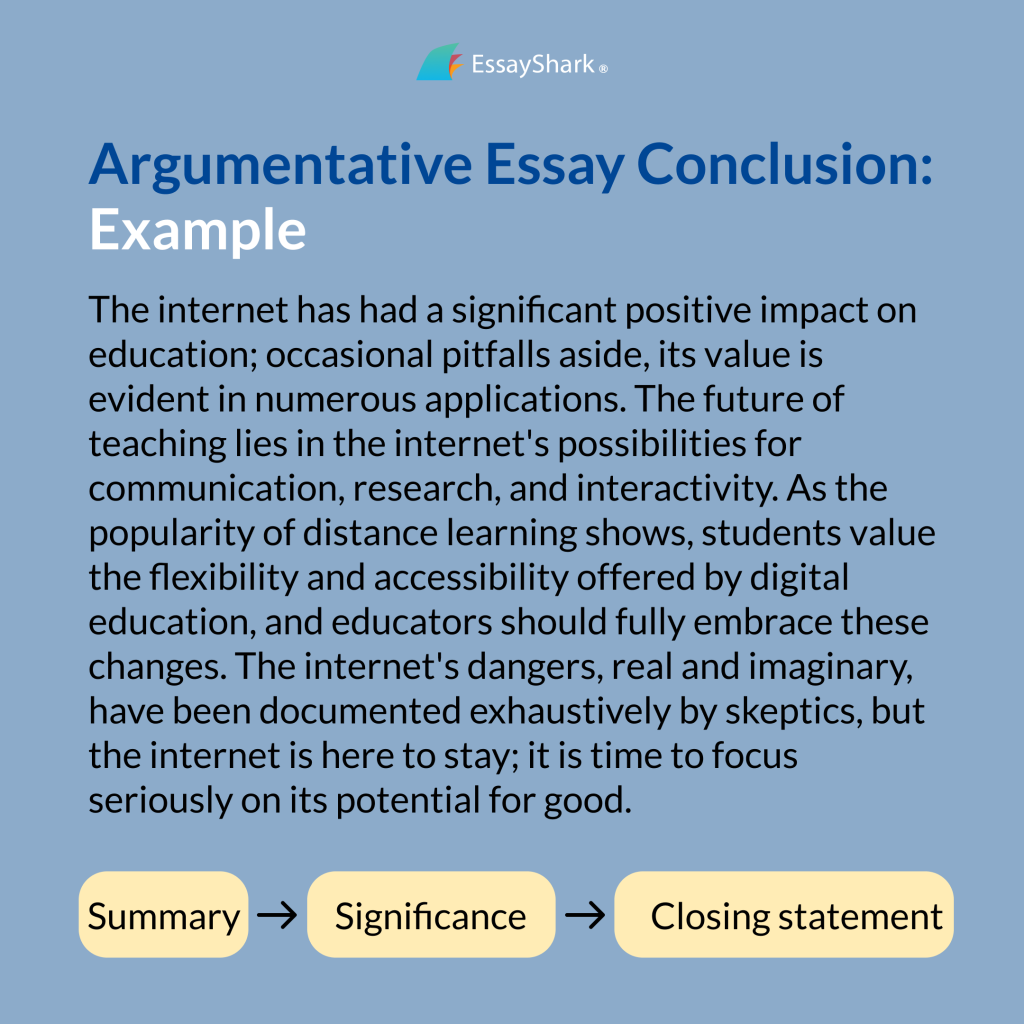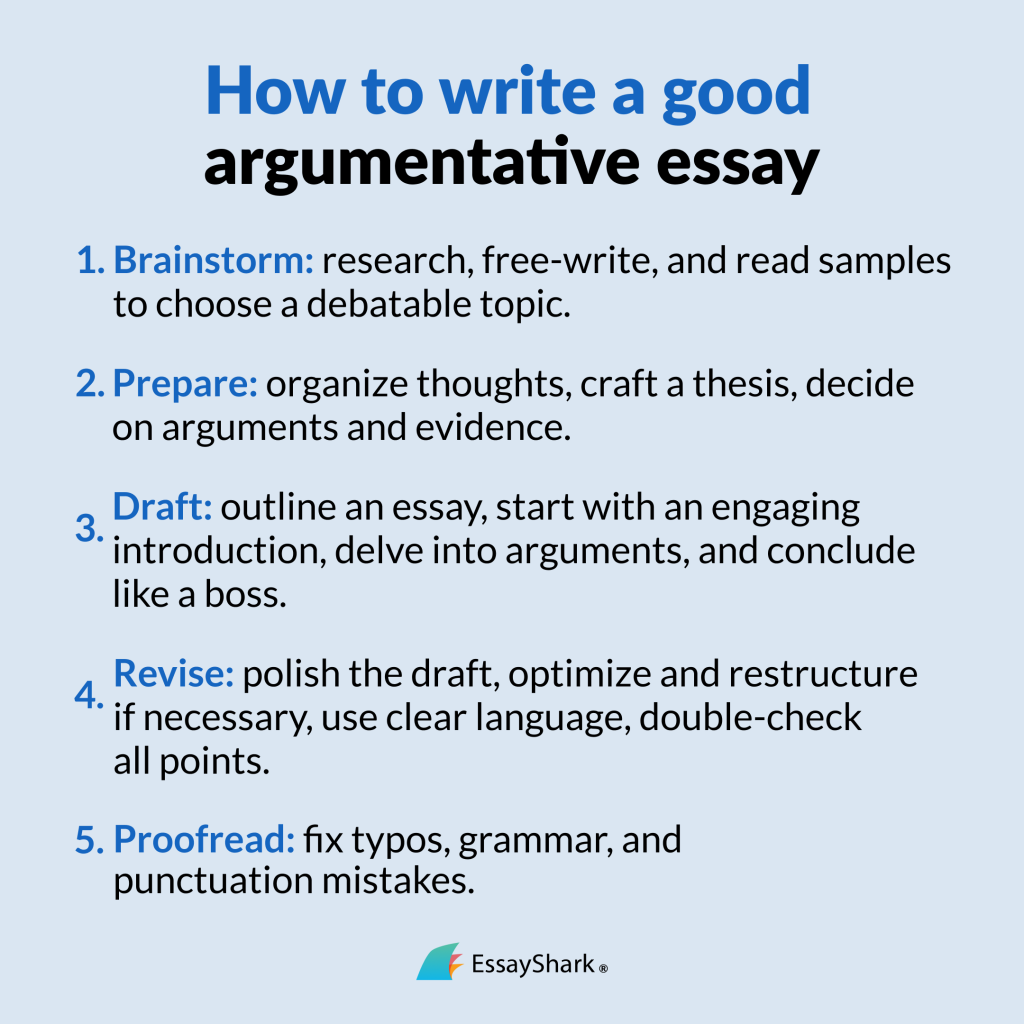Are you looking for a guide on how to write an argumentative essay?
You’ve heard it’s a standard writing task for college students, so it should be easy, right? But many students, after reading tons of articles on the topic, still struggle to understand this type of essay.
It’s frustrating.
More than that, it hurts your academic performance.
Well, it’s time to change that!
Our essay writers have crafted the ultimate guide to argumentative essay writing. It’s straightforward, easy to use, and has actionable tips to help you with your argumentative essay assignments.
So, let’s get down to business.
Table of Contents
Argumentative Writing Basics
First, the question:
What is an argumentative essay? What makes it different from other paper types (besides the fact it remains the #1 writing task for high schoolers and students to master)? And why is it that you need to write it so often?
If these questions have crossed your mind, not to worry. We’ve got you covered.
What Is an Argumentative Essay?
Here’s a stellar argumentative essay definition from Perdue OWL:
The catch:
You don’t only establish your position on the topic but also need to prove it and convince a reader that this position is correct.
The purpose is to persuade your audience to agree with your viewpoint. You have to convince a reader to believe that your argument (thesis statement) is logical and supported by reasoning and evidence.
“If I should persuade a reader in my paper, isn’t it a persuasive rather than argumentative essay then?” you may ask.
Good point. Still, there’s a tiny yet significant difference between argumentative and persuasive essays.
| Persuasive essays | Argumentative essays |
| Choose a position and present only the evidence that supports it | Choose a position but also show other opinions (rebuttal) |
| You provide evidence and can also be a bit emotional to convince the reader | You stay unbiased and show only specific data, facts, reasons, and evidence |
| You write for a reader to agree with you: “Yes, you’re right!” | You write for a reader to agree that your approach is worth listening to: “Yes, you’re right; it’s a good argument to add to the discussion.” |
In plain English, persuasive essays are about “I’m right!”, while argumentative papers are more about the “My point also deserves consideration.”
Why Write Argumentative Essays
Your professor assigns argumentative papers not because they hate you or want to frustrate you. The goal is to help you grow the skills that will benefit you post-college:
- Critical thinking
- Information research and evaluation
- Structured thinking
- Persuasive communication (meaningful thought expression)
- Writing skills
- Problem-solving
- Cultivated sense of ownership
Moreover:
Argumentative papers aren’t only about college writing.
They are the basis for opinion pieces, blog posts, and editorials. We use them in debates, discussions, policy-related fields, speeches, and presentations.
Given that, it’s no surprise many specialists launch courses related to academic writing that include argumentation and claims organization. (For example, scientific writing consultant Susan Mitchell has such to help people craft their skills when working with texts.)
How to write an argumentative essay video guide
Watch this video to find out more about persuasive writing and learn to write an outstanding argumentative essay example.
Basic Argumentative Essay Structure
Regardless of the context, your paper should include five core elements to be an argumentative essay:
- A clear-cut thesis statement in your introduction
- Evidence and reasoning to support your thesis throughout the body paragraphs of your essay
- Counterarguments (the opposing viewpoint)
- A compelling conclusion summarizing your points and giving food for thought to readers
- Persuasive tone of voice
How to Write an Argumentative Essay
- Choose a powerful topic
- Do precise research
- Outline the essay
- Craft a draft
- Proofread and edit
And now, to practice:
Below are even more details on how to write an argumentative essay step by step.
Choose a Powerful Topic

It’s often a teacher assigning argumentative essay ideas. But don’t fret if no particular topic is assigned. Here’s your chance to write about something interesting to you yet controversial enough to engage the audience.
Good argumentative essay topics can be debated, offering at least two points of view on an issue. Not only do they give readers information about something, but they also motivate the audience to join the discussion. Consider a topic that expands minds and makes it possible for readers to see a subject in a new perspective.
Where to find them?
Check our 140+ Argumentative Essay Topics With Samples.
How to know your chosen topic is good enough:
- Consider polemical rather than expository issues: Avoid those too generic to argue
- Popular subjects that lend themselves to an argumentative essay include gender issues, culture debates, politics, climate change, animal rights, etc
- Choose a topic you have (and can express) your opinion on or one that you’re willing to develop a stance on through research
- Ensure that you have sufficient arguments, rebuttals, and evidence to cover the topic in your essay
- You may want to avoid issues that overly trigger your emotions; they may be challenging to expound on with a clear mind
- Remember the audience: Would it be interesting for them to read about this topic and discuss it?
- Take risks and try topics others might be afraid to cover
Do Precise Research
Once you have a topic, if you haven’t already, it’s time to decide on the position you’ll support in your essay. What claims will you present? What evidence will you provide to support those claims and to counter opposing viewpoints?
Do research to see what types of claims will fit your topic best and to find evidence and reasoning to support them in the body of your essay.
Six types of claims you can use in argumentative essays:
- Fact
- Definition
- Value
- Cause
- Comparison
- Policy

Each claim in your essay needs evidence to prove its reasoning . What can you use as a source to support your points?
- Definitions, examples, and explanations
- Facts and statistics
- Expert interviews and testimonials
- Surveys
- Documents from the internet: books, newspapers, journal articles, magazines, government documents, etc. (Avoid generic and user-generated sources like Wikipedia, but feel free to check references under its articles for further research.)
- Narratives or personal stories illustrating your points
Outline the Essay
An argumentative essay outline is a plan for your paper:
Here, you’ll make notes on what you’ll write in each paragraph, making it easier to craft a draft. It will help ensure that you include everything that you intended to add to the structure and that your argumentative essay flows logically.
The basic outline for your essay might have the following structure:

If you want to take things a step further and try a more advanced structure, there are three models (aka formats, aka methods) to present your arguments in an essay:
- Aristotelian (Classic): to make straightforward arguments
- Toulmin: to present complex issues when using a rebuttal as a thesis
- Rogerian: to show both sides of an argument as valid
Sounds confusing?
See the Argumentative Essay Format block below for more details on what to mention in every part of your essay outline, depending on your chosen model.
How to Write an Argumentative Essay: Craft a Draft
Now, it’s time to write!
Here’s how to start an argumentative essay:
Think of a hook sentence for a reader to get interested in your work. It can be an intriguing question, a controversial statement, fascinating statistics, etc. After that, provide background information on your topic so the audience can understand the issue. Finally, present your thesis statement.
When thinking about how to write an argumentative essay introduction, some students use the BAM method:
- B — background: Engage a reader with a writing hook
- A — argument: Explain your opinion on the topic; it will be your thesis statement
- M — main points: Present the arguments you’ll use in the essay; they’ll serve as topic sentences in the body paragraphs of your essay
Below is an example of a standard argumentative essay introduction:

The number of paragraphs may vary depending on your assignment requirements and topic complexity. A standard 5-paragraph argumentative essay has three body paragraphs: two are for arguments that support your thesis, and one is for a rebuttal (counterarguments your opponents have on the issue).
When writing, remember the following aspects:
- One paragraph = one argument and evidence related to it
- Each paragraph starts with a topic sentence (argument) and expands to its specifics
- Finish each paragraph with a logical transition to the next one
- Keep paragraphs short (4-5 sentences), and don’t waste time on irrelevant information or information that lacks clarity
Try the PEEL structure when building essay paragraphs:

- P — point: A topic sentence presenting the paragraph’s main idea
- E — elaboration: Some extra info to support the topic sentence
- E — example: Evidence that supports the topic sentence
- L — link: Back to the topic sentence + transition to the next paragraph
Once again:
Argumentative essays are about debatable topics, so remember to devote at least one body paragraph to counterarguments your opponents might have on your thesis.
Now, let’s write a conclusion for your essay:
It’s the final paragraph of your paper, i.e., your last chance to persuade a reader and emphasize the importance of your arguments. Organize it as follows:
- Restate your thesis. (Don’t copy the one from your introduction; paraphrase with synonyms instead.)
- Say why the discussed issue is significant and worth the audience’s attention. Also, it’s okay to admit if opposing arguments are partly valid.
- Provide a final statement answering the “So what?” question for readers to understand what to do with the information. Give them some food for thought: It can be a rhetorical question or a call to action for further investigation of the topic.

Proofread and Edit
Phew! Your essay draft is ready. It’s time to reread it a few times and ensure it’s free from errors and structural inconsistencies.
The ideal option would be to edit your argumentative essay a day or two after you’ve written it. It allows you to see it with “fresh eyes” and notice tiny drawbacks you might miss when tired after writing.
First, check if your essay has all the necessary elements and logical structure. Then, ensure that you’ve covered all the claims and provided all the evidence you planned to include. Are your arguments convincing enough?
Finally, proofread your essay to ensure that:
- All the data is correct
- Your draft is free from typos, grammar errors, and punctuation mistakes
- You’ve formatted your essay according to the assigned requirements and the rules of academic writing
Check our Free Essay Writing Tools to save time and improve your paper faster.
Tips on How to Write an Argumentative Essay
For this section, our writers have shared extra tips for your essay to look great and sound more professional. So:
You’re about to find out how to write a good argumentative essay. Follow the tips below and be amazed at the result.
- Choose a debatable topic that has two or more opposing viewpoints
- Ensure that you have a substantive enough argument with adequate evidence
- Establish a clear-cut position on the topic
- Remember to include counterarguments and refute them
- Use a formal voice. Argumentative essays aren’t about creativity; follow the structure, be straightforward, and organize all the paragraphs according to the prescribed format
- Make your thoughts flow. Use transition phrases and linkers between paragraphs and sentences for better coherence: “however,” “more than that,” “this shows,” “for example,” etc.
- In most cases, avoid starting your sentences with words like “but,” “and,” and “because;” use them as linkers within your sentences instead
- Use simple formulations. Resist the temptation to write essays with fancy words or flowery prose; be straightforward so readers can get the main point of your message, not marvel at your extensive vocabulary
- Write in the second person. Use “you” when crafting an essay; this format is perfect for a paper to sound academic yet engaging for a reader
- First-person pronouns (I, we) are acceptable unless you make them sound too self-centered. Ensure that you don’t look like you don’t care or don’t know about alternative opinions on the topic
Argumentative Essay Outline
We’ve already covered the basic outline for argumentative essays above. Now, let’s define the elements to include in each section:

By outlining all these components in advance, you will write your essay faster and ensure that you haven’t missed any critical points when drafting.
Argumentative Essay Format
Things are more complicated with an argumentative essay format. Two rules are here:
Choose a Model
It’s okay to use a basic essay structure you already know. However, if you want to support more complicated arguments and sound more convincing and professional, you can choose among three advanced options for formatting your paper.
Decide on the model (method) to structure your essay and organize the outline accordingly:
| Aristotelian (Classic) | problemexplain your viewpoint on itexplain your opponent’s opinion on it; refuteprovide evidenceconclude |
| Toulmin | state your argumentprovide evidenceexplain the connection between your claim and reasoningshare additional evidenceprovide limits and concessions to your claimaddress opposing viewpoints |
| Rogerian | problemshare an opposing viewpoint firstexplain your viewpointbring them together, presenting a middle groundconclude |
Follow the Formatting Rules
Argumentative essays are a form of academic writing, so they follow a particular format and citation style (APA, MLA, Chicago, etc.). As a rule, you can find all those guidelines in the prompt you get from an instructor. If they aren’t there, the teacher probably assumes you already know how to format argumentative essays.
Below is your cheatsheet to use when in doubt:
- Alignment: Left
- Font: 12-point Times New Roman, Colibri, or Arial
- Spacing: 1.5 or double
- Margins: 1-inch
- Format to save: Word Doc unless stated otherwise
- Word count: 800-1000 unless otherwise indicated
How to Write a Good Argumentative Essay
First, ensure your paper includes all the main features of an argumentative essay:
- A debatable topic and clear thesis
- Relevant evidence to support your arguments
- A definite structure that presents both arguments and rebuttals
- A compelling conclusion
- Persuasive writing style and straightforward language
Second, follow these steps on how to write an argumentative essay:

- Brainstorm: research, free-write, and read samples to choose a debatable topic
- Prepare: organize thoughts, craft a thesis, decide on arguments and evidence
- Draft: outline an essay, start with an engaging introduction, delve into arguments, and conclude like a boss
- Revise: polish the draft, optimize and restructure if necessary, use precise language, and double-check all points
- Proofread: fix typos, grammar, and punctuation mistakes
Tips on How to Write an Argumentative Essay
Are you still with us, craving more tips on how to write an argumentative essay?
Great!
Read and save this checklist to check when in doubt:
- You have a debatable topic with sufficient arguments
- You’ve read the guidelines from your professor and know the structure and format to use in your essay
- You have a clear-cut thesis statement in the introductory paragraph
- Every source you reference in your essay is relevant, reputable, and reliable
- You’ve organized arguments logically and coherently
- You’ve brought up an opposing view in your essay
- Your concluding paragraph restates your thesis and leaves readers with some food for thought
- Your language is straightforward, yet not rude or aggressive
- You’ve checked your draft for consistency in style and the correct use of grammar.
Ready to “Wow” Teachers With Your Next Essay?
We’ve tried our best to help you understand how to write an argumentative essay, and we hope we’ve answered any questions you might have had. Now it’s time to craft an excellent paper that your teacher will have no choice but to mark high, right?
Not sure if you’re ready to go it alone just yet? We have three options for you:
- Be brave and open to communication with teachers. They often understand the challenges a student faces when choosing topics or claims for their argumentative essays, so they are usually happy to help.
- Ask peers with sharp writing skills to assist you.
- Contact our essay writing service anytime you’re afraid of failing the assignment or missing a deadline. Experienced academic writers are ready to help you with your writing endeavors.
Your move!
Photo by Thought Catalog from Unsplash








